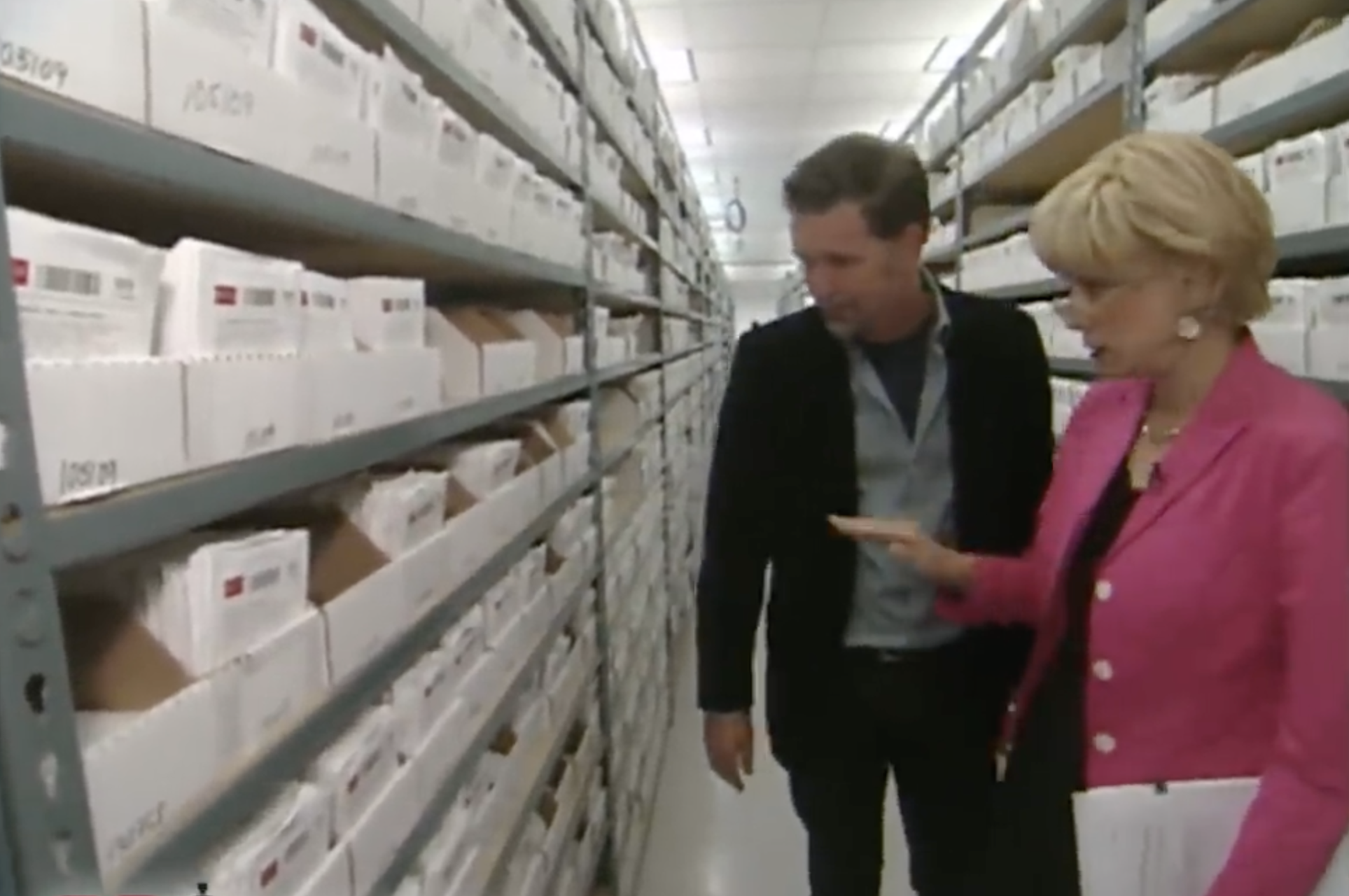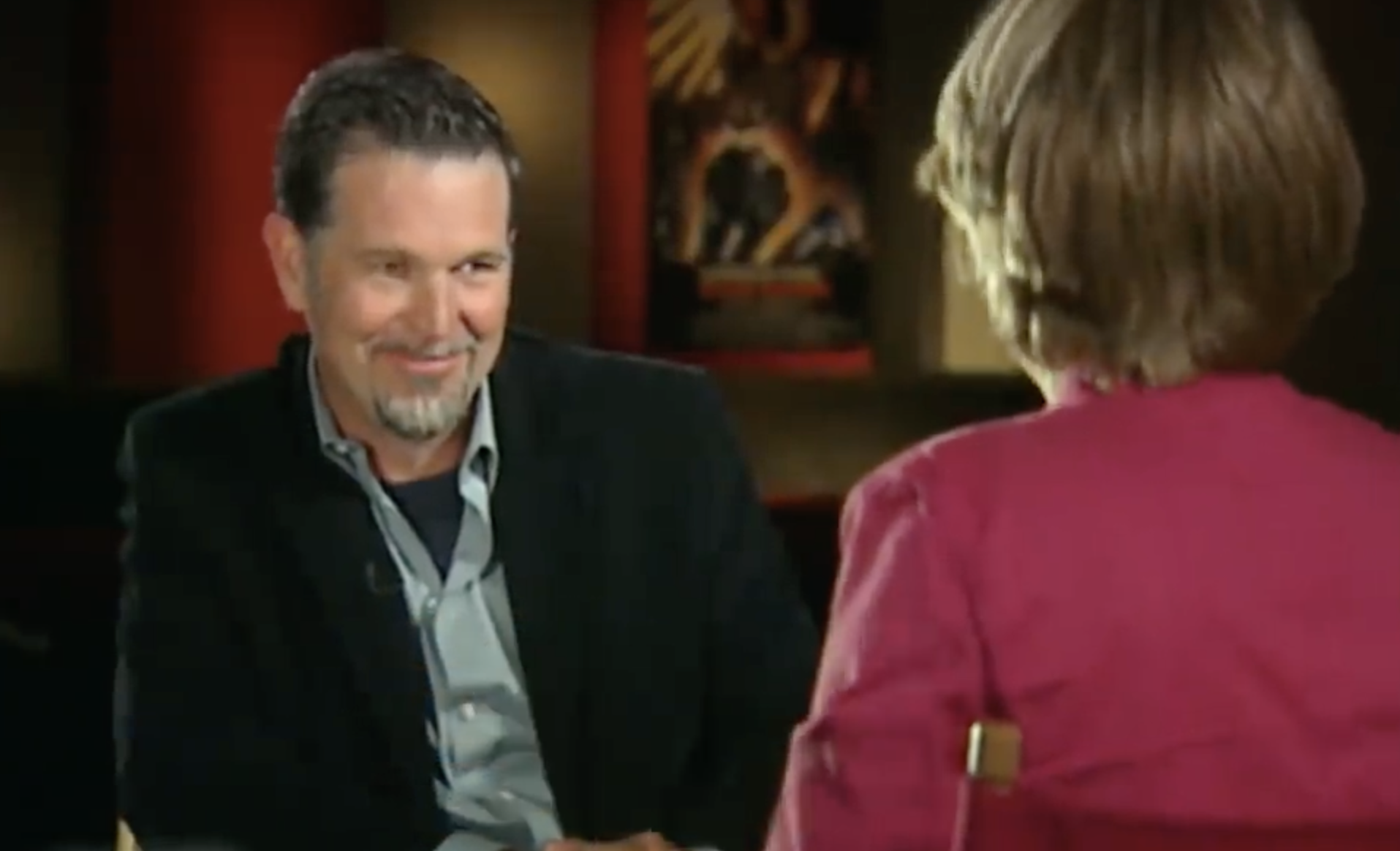They said “downloads,” not “streaming.” What Netflix’s miss means for AI today.
They said “downloads,” not “streaming.” What Netflix’s miss means for AI today.
In 2006, if you asked someone what Netflix was, they’d probably say, “Oh yeah, that DVD-in-the-mail company.”
Back then, Netflix was a fast-growing disruptor, shipping over 1.5 million DVDs per day, operating 40 warehouses nationwide, and raking in $50 million in monthly revenue. Their CEO at the time, Reed Hastings, was being profiled on 60 Minutes. He walked through one of their cavernous distribution centers, showing off how quickly DVDs were returned, cleaned, and re-shipped with industrial precision. It was cutting-edge logistics… for physical media.
But what’s really wild about watching that 60 Minutes segment now? Not once did anyone say the word “streaming.”
Seriously. Not once. The word they used instead? “Downloading.” Over and over again. Twelve times by my count.

In 2006, Reed was already talking about how Netflix would one day let users download movies from the internet. His bet was that downloads would be the future – though maybe five to ten years away. Hastings even boasted that Netflix would be more successful at it than Apple or Yahoo, because they’d stay laser-focused on movies while the tech giants chased books, music, and everything else.
Looking back, it’s easy to laugh. Not in a “how funny!” kind of way, but more like: wow, even the innovators themselves couldn’t fully see where things were going.
Reed thought DVDs would dominate for another decade. He was already preparing to quadruple his warehouse footprint. He was trying to beat Apple at downloads – there’s that word again. But nowhere in that segment did anyone say, “One day, people will just open an app, click play, and the movie will start streaming instantly.”
Because “streaming,” as we understand it now, wasn’t a mainstream concept yet. Technologically, it was nearly possible. But the user behavior wasn’t there. The expectations weren’t there. The term “streaming” hadn’t crossed over into the everyday vocabulary of people aged 8 to 80. That would take a few more years.
So here’s the takeaway: If we couldn’t predict what Netflix would become just 18 years ago – if even Netflix couldn’t predict it – what makes us think we truly understand where AI is headed today?
Today, AI is our “download.” It’s everywhere. Everyone’s talking about it. Investors are placing billion-dollar bets. Every company is “AI powered.” Some politicians are trying to regulate it, and some are not. But we’re probably just at the DVD-mailing stage of this thing.
The thing is, we have no clue what AI will look like in 5, 10, or 20 years. We say things like “chatbots” and “autonomous vehicles” and “text-to-image generators,” the way Netflix said “downloading” in 2006. But what if we’re missing the real shift – the thing that hasn’t even been named yet?
Streaming didn’t just change how we watched movies. It changed everything about the business model…and businesses. Legacy brands that have been around for a hundred years, like Paramount and Warner Bros., are still trying to figure out where they fit.
AI might do the same. Not just for creative work or customer service or transportation, but for how we think, work, communicate, and learn. We just can’t see it yet. Not clearly. And that’s okay.
Innovation doesn’t usually unfold the way we plan it. Reed Hastings didn’t start Netflix thinking he’d eventually become a dominant force in streaming, original content, and Emmy-winning productions. He was just a guy annoyed by a $40 late fee for a VHS tape and inspired by the gym membership model.

That origin story alone should remind us that transformation is rarely about seeing 10 steps ahead. It’s about making the next right move, staying adaptable, and letting the technology evolve beyond your original vision.
Netflix evolved because Hastings didn’t cling to the DVD model. He didn’t insist on being right about downloads. He embraced what actually worked. And that’s the real challenge with AI – or any tech: not being right about the future, but being flexible enough to evolve with it.
We keep experimenting, we stay curious, we stay humble. If you’re in business, it’s not about having all the answers, it’s about watching what your customers actually do with the tools you give them.
What if you’re a creator? Don’t worry about mastering every new platform or tool, focus on learning, testing, and evolving your voice. And if you’re a leader, recognize that your job isn’t to predict the future, but to build teams that can adapt to it.
Because whether it’s Netflix in 2006 or AI in 2025, it’s all the same: we always think we know what’s coming… until we don’t. And then something changes the world.